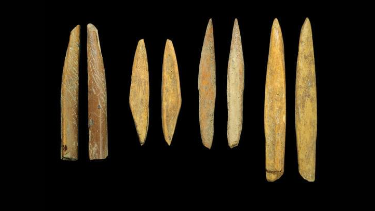Unearthing stone-age Sri Lankan hunting tools

Sponsored by

Sponsored by

While rich in range of potential food sources—from ground- and tree-dwelling animals to freshwater molluscs and wild fruits—rainforests have often been seen as an insurmountable challenge for most ancient human populations.
Griffith researchers are part of a team that has proved this conception as false, uncovering evidence that ancient humans not only successfully adapted to rainforest living, but did so in an ecologically sustainable manner.
The team focused their efforts on one of Sri Lanka’s most famous cave sites, Kitulgala Beli-lina, renowned for its wealth of stone tools, bone artefacts and the remains of both game animals and humans. Among their findings was a selection of miniaturised stone tools, skilfully manufactured from pebbles and cobbles sourced from nearby streams and then shaped with hammerstones. The resulting small, slender and sharp pieces were then most likely mounted onto wooden shafts to create projectile hunting tools.
This discovery, in combination with other cave records in the region, demonstrates repeated and consistent settlement of rainforest zones from 8,000 to 45,000 years ago. It also provides key insights into how humans adapted to suit their environment as they migrated across Asia.
Professor Michael Petraglia, director of Griffith’s Australian Research Centre for Human Evolution and a senior author of the associated PLOS ONE study, played a key role in the team.
‘The cave excavations in Sri Lanka have provided new insights into human behaviour over the long term, showing that foragers were able to adapt and survive without adversely impacting their ecosystems,’ he said. ‘The hunting of prey high in the trees and dense forests required special subsistence strategies, planning and sophisticated toolkits.’
‘In order not to over-exploit their local environments and food resources, foragers repeatedly moved from cave to cave,’ Professor Petraglia said, ‘consistently shifting their residences without harming the long-term sustainability of their subsistence base.’